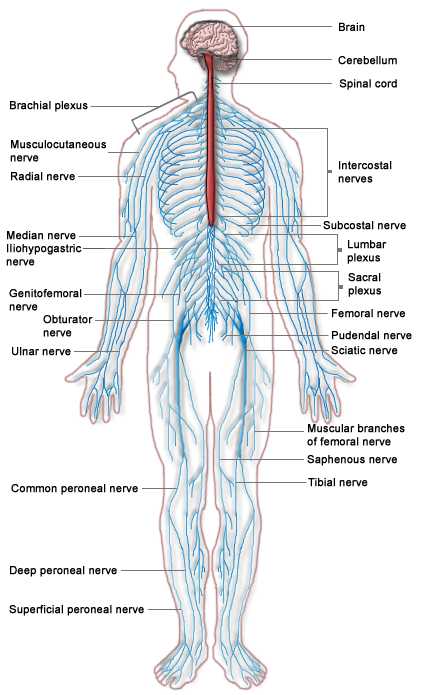What makes up the peripheral nervous system?
1 Answer
The Peripheral Nervous System (PNS) includes all the nerves that go from the skin, muscles and organs to the spinal cord and eventually the brain.
Explanation:

Diagram: the peripheral nervous system (in blue).
The PNS consists of 12 pairs of cranial nerves and 31 pairs of spinal nerves. These nerve pairs may be sensory like those that detect information related to smell and vision. Others may be exclusively motor related like eyeball and hearing. Certain nerve pairs have both sensory and motor cells such as those involved in taste and swallowing.
Sensory cells carry messages to the central nervous system (CNS). Motor cells carry the signal from the CNS to the internal organs, muscles and glands in the periphery or the outer edges of the body.
The PNS can be divided into two systems :
The autonomic nervous system - which regulates involuntary actions e.g. breathing and digestion.
The somatic nervous system - which governs voluntary actions and body reflexes.
The PNS connects the CNS to environmental stimuli to gather sensory input and create motor output.

